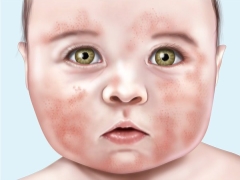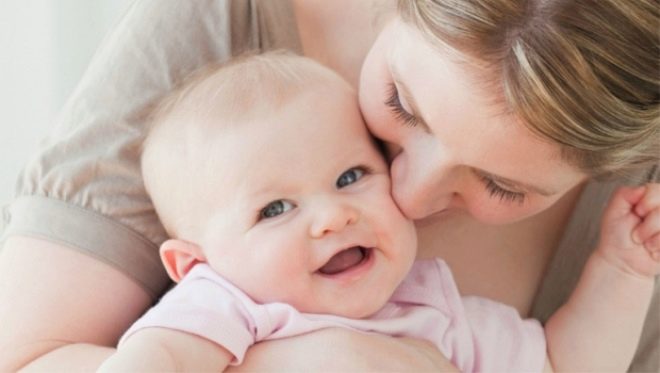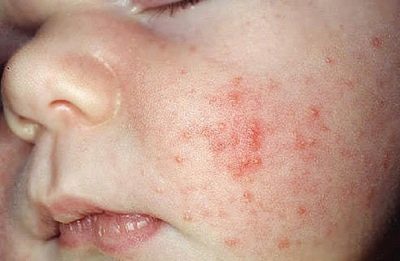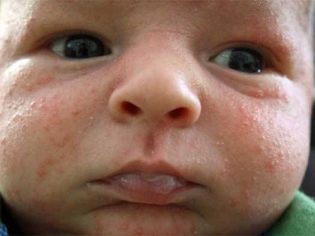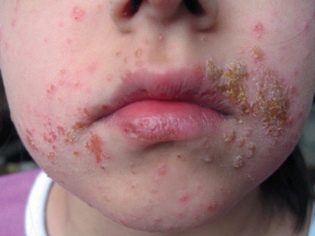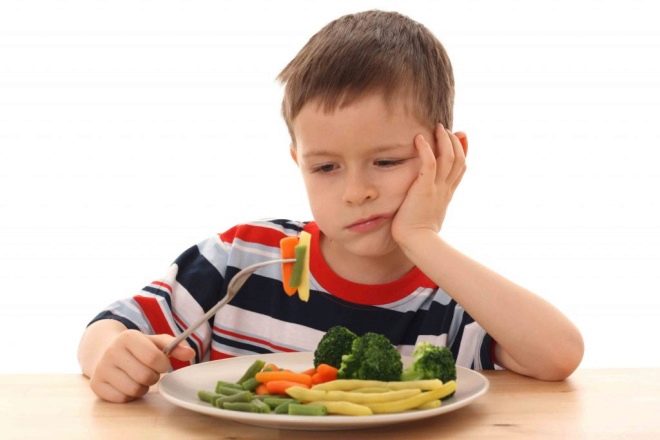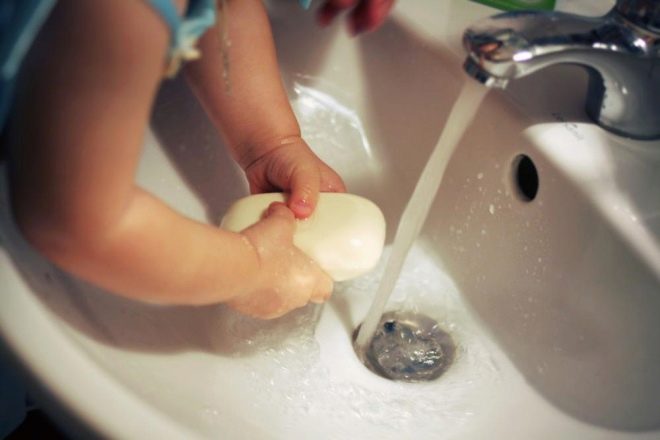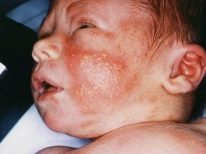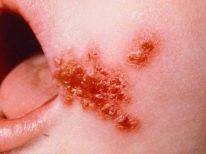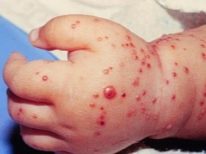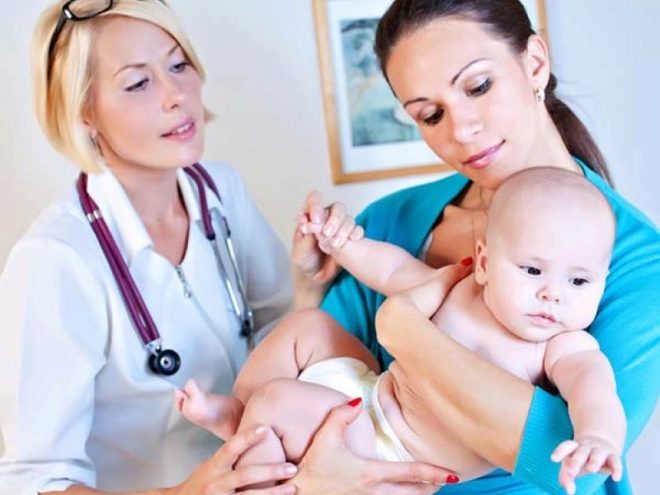Pyoderma in children
Pyoderma is one of the three most common children's skin diseases along with scabies and fungal lesions of the skin. Practice shows that it is impossible to completely protect a child from an illness, and at least once in their lives, children face this unpleasant and rather painful phenomenon. On how to recognize pyoderma and how to treat it, we will discuss in this article.
What it is?
Translated from the ancient Greek, the term "pyoderma" means literally "purulent skin." This fully reflects the essence of the disease. Pustules occur on the skin due to the penetration of bacteria in it - cocci. These are very common pathogens that literally surround a person, even if he is very sensitive to personal hygiene.
Spherical cocci bacteria can affect not only children, but also adults, but in childhood the disease occurs ten times more often due to the physiological characteristics of children's skin. It is more delicate, thin, vulnerable, its protective functions in comparison with the skin of an adult person are significantly reduced. Local immunity in a child is less developed, and therefore the body often cannot resist the penetration of alien and aggressive bacteria. The younger the child, the weaker the protective functions of his skin, and therefore pyoderma, like other dermatological diseases, is especially dangerous for children under one year of age, whose local immunity is practically not developed.
According to medical statistics, More than 100 million children fall ill with pyoderma every year. Moreover, the incidence in developed countries is no less than that in the third world countries. But there is a certain climatic factor that does not even affect the frequency of the disease, but the severity of its occurrence.
In hotter countries and regions, especially in countries with a tropical and subtropical climate, pyoderma in children is more pronounced and difficult.
The reasons
Pyoderma can develop primarily on perfectly healthy skin, as well as become a complication of any skin disease, accompanied by symptoms such as itching. A child with an itchy disease (for example, dermatitis or scabies) combs the skin, violating its integrity. The resulting wound is an excellent breeding ground for cocci. Pyoderma usually affects the skin that has scratches, cuts, abrasions or other lesions - burns, frostbite. Bacteria - staphylococci, streptococci and other members of this family, falling on the wound surface, quickly begin to multiply, causing suppuration.
Sometimes the starting mechanism that makes skin vulnerable to cocci is violation of temperature - if the baby is overheated and sweated or cold, overcooled, then the local immunity weakens, and pathogenic bacteria quickly begin to "manage" in the pores and hair follicles. Weak local skin immunity it can also cause some damage to the central nervous system, metabolic diseases, and diseases of the internal organs.
Quite often, children with diabetes are susceptible to pyoderma.
It is quite rare, but it also happens that the child has an increased individual sensitivity to pyogenic bacteria. The appearance of pustules is always accompanied by signs of an allergic reaction, and the pustules themselves are quite large.All the reasons that can cause pyoderma in medicine can be divided into endogenous (internal) and exogenous (external). Other internal reasons, besides those listed above, can be identified as:
- immunodeficiency congenital diseases;
- weak immunity after illness;
- the state of hypovitaminosis (deficiency of vitamins important for the development of the child).
External factors that contribute to the reproduction of pathogenic cocci are as follows:
- damage to the integrity of the skin;
- failure to comply with hygienic rules, inadequate care for the skin of the child;
- Close enough contact with a person suffering from a bacterial infection, use of common toys, things, dishes, bed linen (pyoderma is contagious!);
- contact with a person who is not sick at the moment, but is a carrier (the one that recently had had a bacterial infection, sometimes a hidden carrier);
- psychological trauma, a state of severe or prolonged stress, overworked child;
- malnutrition, an abnormal diet, rich in carbohydrates and fats.
Separately, it should be noted that the violation of hygiene should not be regarded as the main cause of the disease. Parents whose child suffers from pyoderma usually begin to blame themselves for not having watched.
Washing hands with soap and daily water procedures, of course, reduce the risk of pyoderma, but do not exclude it. That is why quite often in a happy family, where the child is well-groomed and surrounded by care, they face such an unpleasant bacterial infection.
Classification
If the disease struck the child for the first time, and the parents quickly went to the doctor, then we are talking about acute pyoderma. If the baby often suffers from pustular diseases, and they are difficult to treat, then this is chronic pyoderma. If only one area of the skin is affected, for example, there are pustules in the nose or on the hands, then we are talking about a localized form of the disease. If there are pustular lesions in two or more parts of the body, this is a diffuse form of pyoderma.
Purulent formations can be superficial, if they affect only the outer layer of the epidermis, and deep, if the hair follicles, dermis are involved in the inflammatory process. The main classification concerns the causative agent of inflammation. For proper treatment is very important to know what kind of microbe was the cause of the disease process. There are three most common types of pyoderma:
- staphylococcal;
- streptococcal;
- streptostaphyloderma (with simultaneous infection with staphylococci and streptococci).
Danger
Acute pyoderma is not as dangerous as you might think. The real threat of a sick person is to others, because it becomes a source of infection. If it is not isolated at the time of treatment, the spread of a bacterial infection is inevitable.
Forecasts of doctors regarding this disease are quite favorable. Timely correctly treated pyoderma does not cause complications, does not recur. However, chronic forms of the disease can significantly complicate the child's future life, especially if he has other serious diseases. Pyoderma in this case can often be felt, and in severe form lead to sepsis.
A dangerous disease can be for infants, if parents do not give it proper importance. Their weak, tender skin is more likely to be infected, and babies in the first month of life suffer from pustular infections very painfully.
Symptoms and signs
According to external signs, pyoderma is very similar to a lot of other dermatological diseases, and therefore it is quite difficult to recognize the disease and distinguish it from other skin ailments at home. The doctor will not be able to do this “by eye,” since only laboratory diagnostics can confirm the origin of skin rashes, their belonging to the world of bacteria.However, parents should know exactly when to consult a doctor.
Symptoms of pyoderma are fairly universal:
- one or more pustules or vesicles with a turbid liquid appear;
- rashes can spread further, and can remain only on one part of the body;
- rashes can be single, and can merge, forming an inflammatory layer that tends to "soak";
- most often in childhood pyoderma begins on the scalp;
- pyoderma on the face and neck is rarely profound.
It has its own characteristics and the rash itself. If you look at it carefully, then we can assume which microbe caused pyoderma.
Staphylococcus often affects the hair follicle and its surrounding space. In the abscess, so if you look closely, you can notice a growing hair in the center. This microbe causes a sufficiently strong suppuration, which in deep form will be called a furuncle or carbuncle. Superficial staphylococcal inflammation is extremely rare.
Streptococcus is usually "based" on smooth skin, causing the appearance of bubbles filled with turbid serous fluid. There is always an inflammatory edging around the bubble. The bubble itself has very thin walls and easily bursts even with a slight touch. A yellowish-gray crust appears in place of the bursting vesicle. She, after falling away, does not leave scars and depigmentation sites.
In the chronic form of streptococcal infection is called simple deprive. In the acute stage, the microbe most often causes impetigo, streptoderma and ecthyma. With a spilled form of a bacterial disease, a child may experience an elevated temperature (not higher than subfebrile values - 37.0-37.8 degrees). In newborns, a spilled form of the disease can cause common symptoms of intoxication - lethargy, weakness, moods, and almost causeless crying.
Diagnostics
If the parents bring a child with a rash and the doctor suspects pyoderma, he will definitely prescribe several important clinical research processes for understanding the processes. This is a complete blood count and urine test, as well as a blood test to determine the Wasserman reaction (for syphilis). Specific diagnostics is based on the taking of a substance from the vesicles on the skin or pustules on the backdoors.
In laboratory conditions, the samples are placed in a nutrient medium and see which microbe grows. Then, the grown bacterium is exposed to various antibiotics in order to determine to which species of antimicrobial agents it is most sensitive. For classical pyoderma, not complicated by serious diseases like HIV infection, this is quite enough to not only know the causative agent of the disease, but also to imagine what and how to treat it.
For classical pyoderma, not complicated by serious diseases like HIV infection, this is quite enough to not only know the causative agent of the disease, but also to imagine what and how to treat it.
Treatment
If pyoderma is detected as an independent disease, antibacterial drugs become the basis of therapy. Which means will be prescribed to a particular child will be clear after receiving the results of the analysis for bacposa and the sensitivity of the microbe to antibiotics. If pyoderma has become a complication of another disease, for example, scabies, then treatment begins with the treatment of the primary primary disease, engaging in pyoderma in parallel.
Staphylococci and streptococci have surrounded people for so long that they have already managed develop a certain "immunity" to most existing antibiotics. People themselves contributed to the resistance of microbes, taking antibiotics without any control and for any reason. Now mankind has received what it has received - resistant bacteria, which are not easy to fight.That is why an analysis is carried out, which determines which of the existing substances, the microbe will show the least resistance.
Usually, during pyoderma, doctors choose one or another drug from the penicillin group, macrolides or third-generation cephalosporins.
In the non-dangerous form of pyoderma, antibiotics may be prescribed in the form of an ointment for local use. The intake of antimicrobial drugs inside is indicated only with a diffuse form of the disease. At the same time use of ointment is shown. Acute pyoderma at home is treated according to the prescribed scheme for about 7 days. Chronic - longer, up to two weeks.
If the child has severe pyoderma, ulcers form on the skin, he will be treated in the hospital, especially for infants and children under three years of age. Along with treatment with antibiotics, it is desirable for such patients to receive intravenous drugs that improve blood circulation, for example, «Actovegin, Trental. To reduce the load on the child’s liver, one of the hepatoprotectors may be prescribed, for example Essentiale. All children with pyoderma are recommended to take vitamins of group B, especially B6 and B12, as well as multivitamin complexes by age, which contain the necessary trace elements.
Chronic pyoderma with deep flow sometimes requires the use of glcocorticosteroids ointments. In the acute stage, the child is administered "Prednisolone"In therapeutic age doses for three days, after which the dosage of the drug is gradually reduced to a complete cessation. Specific treatment is the use of streptococcal and staphylococcal vaccines. External treatments should be carried out 2-4 times a day. It should be remembered that alcohol-based anti-microbial agents are ineffective, and therefore it is not necessary to cauterize abscesses and abscesses with alcohol-containing liquids.
It is best to carry out primary treatment using furatsilina solution, 1% solution boric acid, 1% dioxidine solution or 2% chlorhexidine solution. If there are ulcerative crusts, they are soaked and carefully removed before applying the ointment. Against streptococci and staphylococci aniline dyes - brilliant green are very effective, «Fukortsin».
At the time of treatment, the child is recommended to follow a diet. Parents should exclude carbohydrate foods, pastries, sweets from the kid's menu to the maximum. It is not recommended to wash and rub the affected skin with a washcloth during treatment.
Severe pyoderma - boils, carbuncles - sometimes need surgical treatment. A doctor under local anesthesia reveals ulcers, cleans cavities. After that, the treatment is carried out according to the above scheme, with the use of antibiotics (systemically and externally), antiseptics, vitamins. After recovery, it is desirable to reduce the child to a course of exposure to ultraviolet rays. With chronic pyoderma - such courses are needed at least 2 times a year.
Prevention
The main preventive measure is vigilance. At the first signs of illness, it is necessary to exclude the child's communication with peers, visiting kindergarten and school, so as not to spread the infection further. Reducing the risk of bacterial infection with wounds, abrasions and scratches (and the child has a lot of them!) Will help fast and correct treatment of the affected skin with antiseptics (not alcoholic!).
The likelihood of pyoderma is lower in children whose parents care about strengthening their immunity, including local immunity. To do this, practice pouring, rubbing, hardening from an early age, walking in the fresh air, playing sports. The child should be dressed according to the weather and the house should not be too hot. - sweating increases the risk of pyoderma.
All foci of inflammation, even minor ones, should be treated as quickly as possible. This also applies to the baby’s oral cavity. The baby should receive an adequate amount of vitamins, as well as comply with the obligatory hygienic requirements.
How to treat and prevent this disease, see the next video.
